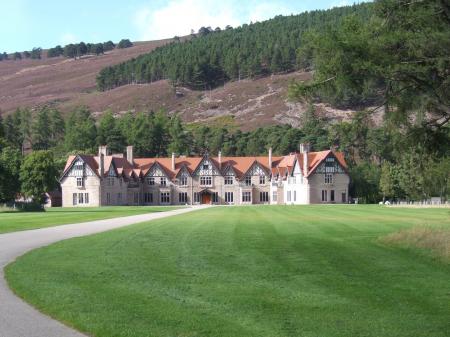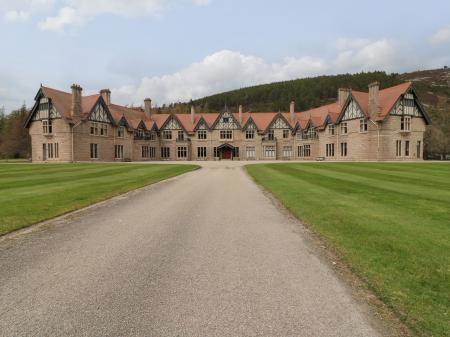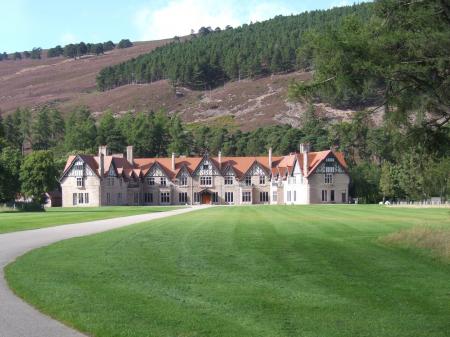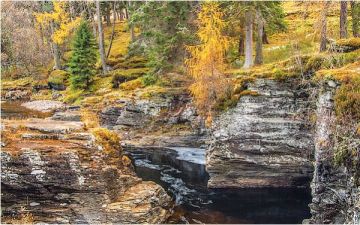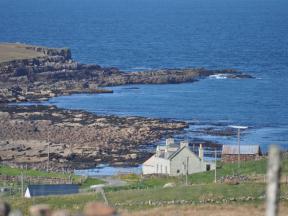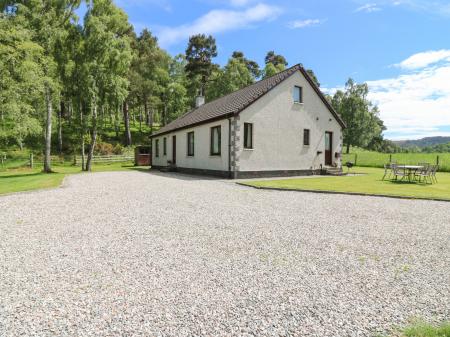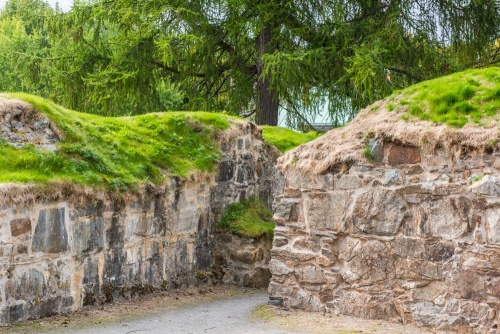
Kindrochit Castle was intended as a base for royal hunting parties, but the location was chosen not just because it was close to good hunting ground, but because the site guarded a pair of major travel routes south to Perthshire and north towards Angus.
Malcolm's fortification was a rudimentary timber structure. At the same time that the castle was erected a bridge across Clunie Water was built. The site was called Ceann Drochaid, or bridge head, and gave Kindrochit its name.
The castle was rebuilt in stone during the reign of King Robert II (1371-1390), when it may have been used as a royal residence. The importance of Kindrochit is emphasised in several royal charters issued at Kindrochit, evidence that the royal court was assembled here.

In 1390 King Robert III granted his brother-in-law Sir Malcolm Drummond, Earl of Mar, a license to build a stone tower at 'Kyndrocht'. Drummond died before the tower could be completed, but at the time of the Earl's death, Kindrochit was the 5th-largest castle in Scotland.
The castle was allowed to decay and over the course of several centuries, it was reduced to an overgrown, crumbling ruin. It was reported abandoned by 1618. A local legend suggests that the castle was allowed to decay after an outbreak of the plague. According to the tale, when the castle inhabitants were struck down with the deadly illness, the castle was ordered to be destroyed by artillery with the residents trapped inside, so that the plague would not spread.
Stone from the castle walls was used to build roads and construct other local buildings. In the last few years, however, the castle has been rescued from decay by the local council, who spent GBP 210,00 to stabilise the walls, clear the undergrowth, create pathways through the site and install interpretive panels explaining the history and construction of the castle.

One of the panels tells the story of the Kindrochit Brooch, a late 15th-century silver-gilt Highland brooch discovered in the pit-prison of Kindrochit Castle in the early 20th century by Dr W Douglas Simpson and a group of Boy Scouts. The brooch was inscribed with the phrase 'I am in place of a friend' and was found in the prison chamber. The brooch is now at the National Museum of Scotland in Edinburgh.
What to See
Kindrochit Castle is essentially a castle in two parts; the earliest part of the fortress we see today was built in the reign of Robert II (1371-1390). The second part is the Drummond Tower, built around 1390 by Sir Malcolm Drummond, as mentioned above. There are several exposed flagstones that formed part of the earlier structure's floor.
Drummond Tower must have been an impressive feature when new; the tower walls are over 3m thick in places (about 10 feet). One ground-level chamber is thought to have been a prison, while another was probably a wine cellar. In this chamber are several pieces of carved stone thought to be part of an arch and stone steps.
The central chamber was likely used as a larder or kitchen. Within the prison wall is a vertical flue thought to be a garderobe chute from an upper chamber.

Archaeological excavations in the early 20th century revealed a large number of animal bones. Most, like salmon, ox, deer, sheep, pig, otter, fox, and eagle would have come from cooking, but there were also horse and dog bones in large numbers.
Kindrochit Castle is on the east bank of Cluny (Clunie) Water, in the centre of Braemar, next to a free parking area.
Don't confuse Kindrochit Castle with the restored 17th-century fortified tower house of Braemar Castle, which stands on the eastern edge of Braemar.









 We've 'tagged' this attraction information to help you find related historic attractions and learn more about major time periods mentioned.
We've 'tagged' this attraction information to help you find related historic attractions and learn more about major time periods mentioned.